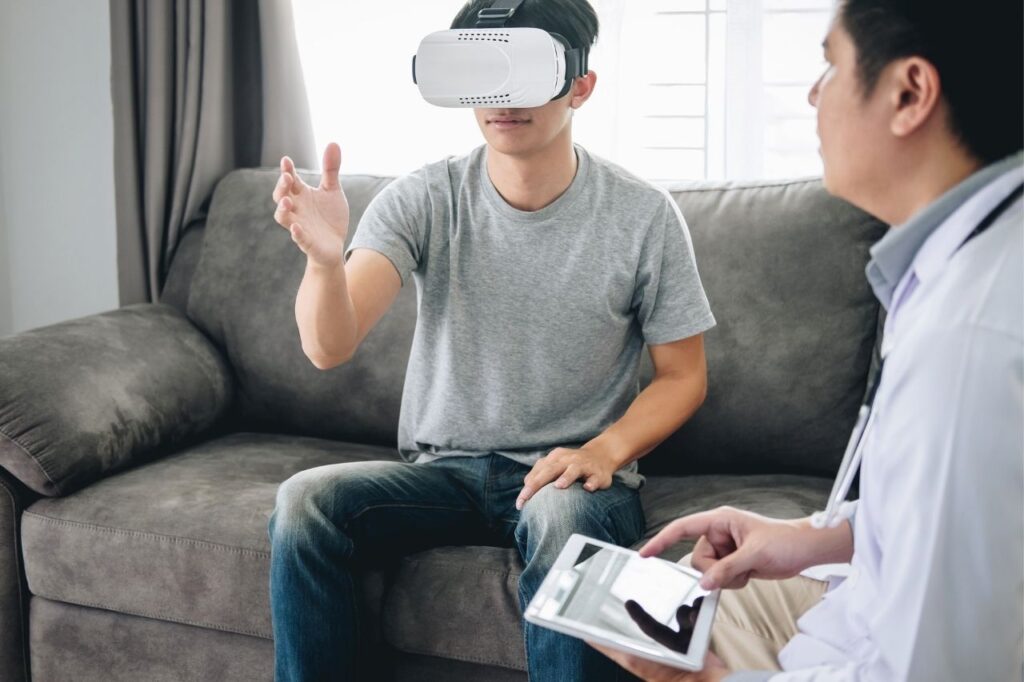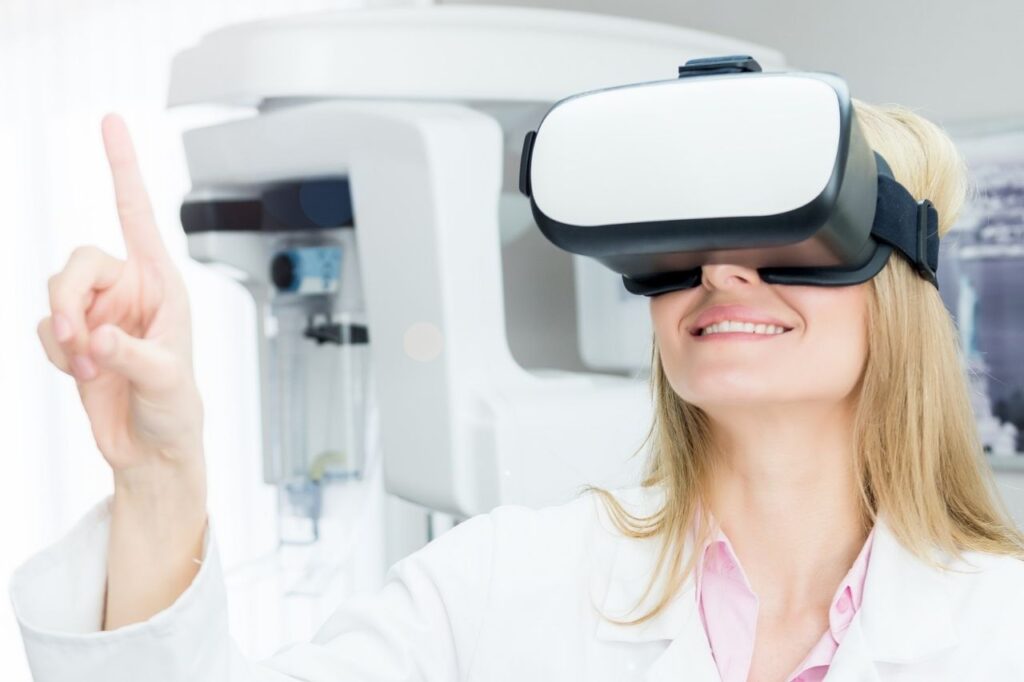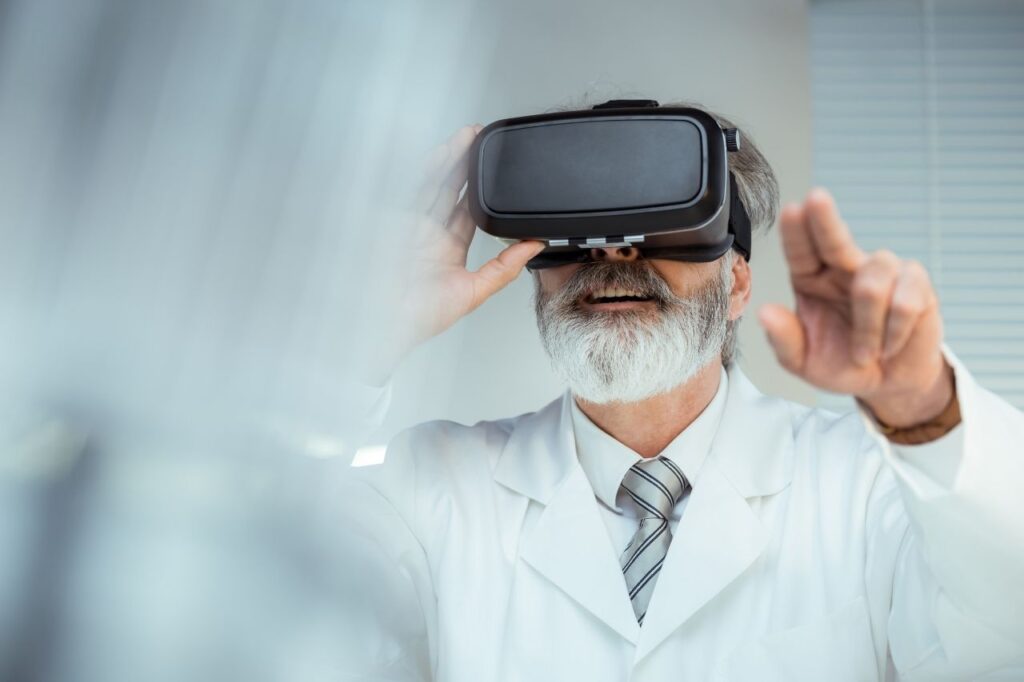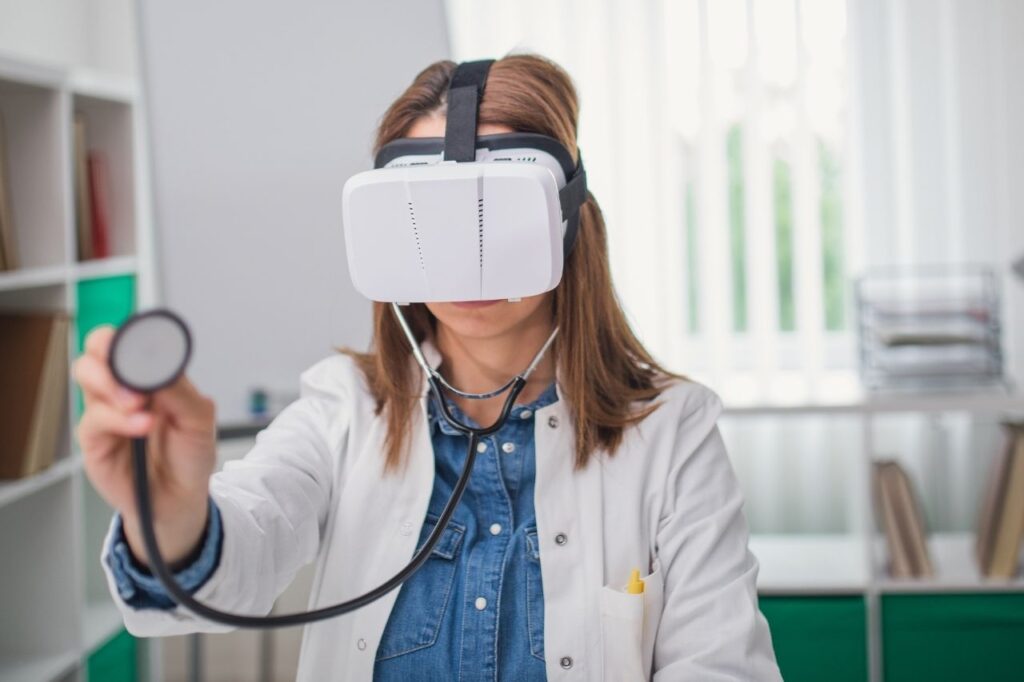What do you think of when you hear the words virtual reality? Most people would imagine someone playing a video game in a completely immersive environment. While this is one common application for VR, it is far from the only one. Virtual reality technology is being used more and more in various industries, including medical and healthcare.
Virtual reality in the healthcare sector is shaping the industry. Health professionals are using VR to provide patients with immersive and customized treatments. But what exactly is VR in healthcare, and what benefits can it offer? This post will give you an overview of virtual reality in the healthcare sector and answer some of the most commonly asked questions. So if you’re curious about how VR might be able to help improve your work or patient care, keep reading.
Contents
- What Is Virtual Reality and How Does It Work in the Healthcare Sector?
- What Are the Applications of Virtual Reality in the Healthcare Sector?
- Potential Risks Associated With VR Technology in Healthcare
- Final Thoughts
What Is Virtual Reality and How Does It Work in the Healthcare Sector

Virtual reality is a simulated three-dimensional image or environment in which a person may interact in a seemingly real or physical manner using specialized electronic equipment, such as virtual reality goggles and gadgets.
The technology would take the form of head-mounted goggles, glove sensors, suits, etc. Virtual reality technology has been around for quite some time. Many people know it as a gaming platform, but now virtual reality in the healthcare sector provides training, diagnosis, and therapy.
For example, a virtual reality simulator for surgery allows surgeons to practice their skills on life-like models before operating on actual patients. This method helps them reduce mistakes during the actual surgery, saves patients from unnecessary risks, improves medical staff confidence, provides an immersive learning experience, and enhances communication among team members.
It also assists with visualizing relatively small structures that would otherwise be difficult to access with hands-on techniques. It’s also an excellent tool for teaching neuroanatomy because it allows students to view large 2D images quickly in succession while interacting with 3D models. Creating the virtual brain enables the students to cut the virtual brain and investigate its anatomical structures without wasting time on dissections.
What Are the Applications of Virtual Reality in the Healthcare Sector?

Within the healthcare sector, many different applications are implemented to improve patient recovery and encourage healthy lifestyles, such as rehabilitation treatment for patients who have experienced strokes or traumatic brain injuries to help them regain control over their muscles.
It could also help anxiety disorders like phobias, where having sessions within virtual environments may help reduce symptoms. Virtual reality has also been shown to assist pain management where other therapies may have failed.
One of the most exciting new developments in this sector is the creation of virtual reality games controlled by brainwaves that have been shown to help people with severe physical disabilities. This method would allow them to interact with and influence their game through changes in their brainwaves.
Virtual reality has significantly developed over recent years, and it’s not just confined to video games or other entertainment purposes. Healthcare professionals can now use these simulations as a form of therapy for those who cannot communicate effectively, such as dementia, autism, or other communication disorders such as Autism Spectrum Disorder (ASD). Virtual reality treatments could also benefit stroke victims patients with anxiety or depression.
Virtual reality can help these patients by allowing them to experience the same surroundings they would in real life but reduced to a smaller scale where they are not overwhelmed. For example, people who suffer from intense anxiety could be given optimistic scenarios in virtual reality games, which eventually let them face their fears in real-life situations.
This technique was previously used in non-virtual form using photographs or videos for real-world exposure therapy, but this is more effective when administered through virtual reality as it provides much better scope and control over the simulated environment. Therefore, healthcare professionals can create particular treatments tailored to each patient.
Potential Risks Associated With VR Technology in Healthcare

While there are many benefits to virtual reality in the healthcare sector, it is not without risks. Patients need to build their confidence and trust in their therapists to feel comfortable enough to continue with the treatment and avoid discouragement from any setbacks or failures.
Suppose a patient feels too self-conscious about their progress. In that case, they may subconsciously restrict themselves from making further progress which could cause them to become discouraged and even give up on the treatment altogether.
In some cases, patients may engage in dangerous behavior while using virtual reality simulations, such as trying to walk off a cliff which would be extremely dangerous if done in real life without the safety net of a virtual environment. Therefore, it’s crucial for health professionals working with these patients to monitor how much time they spend in virtual environments and to remain involved at all times.
There is still a lack of long-term research on the effects of VR games controlled by brainwaves on patients with communication disorders, even though some tests have shown positive results. This new trend offers many possibilities for improving patient care, but it also raises questions about respecting patient privacy and maintaining ethical standards for data collection that should comply with HIPAA rules.
For example, should these types of games be used on children? If so, would parents need to provide consent? How will this new type of research impact current practice within healthcare? These are questions yet to be answered, but we must begin this conversation early rather than rushing into new technological developments without thinking about how they will affect patients.
Virtual reality technology has many incredible benefits for those with communication disorders, but careful consideration and research must be done before fully implementing it as a tool for therapy.
We mustn’t forget about best practices when working with patients, especially those who may struggle to communicate their thoughts and feelings without assistance. With the right amount of guidance and support from health professionals, virtual reality could lead to huge breakthroughs in patient care and ultimately improve the lives of thousands.
Final Thoughts
In conclusion, virtual reality technology is gradually being accepted in the healthcare sector for various applications. Some of these applications include training and education, treatment, and diagnostics. However, VR technology’s potential risks must be considered before its broader adoption and digitization in the healthcare sector.
For example, patients could experience adverse effects such as nausea or headaches if they are not fitted with the right VR equipment. Furthermore, it is essential to note that VR technology should only be an adjunct to traditional treatments and should not replace them. Finally, more research is needed on the long-term effects of VR technology in healthcare.






